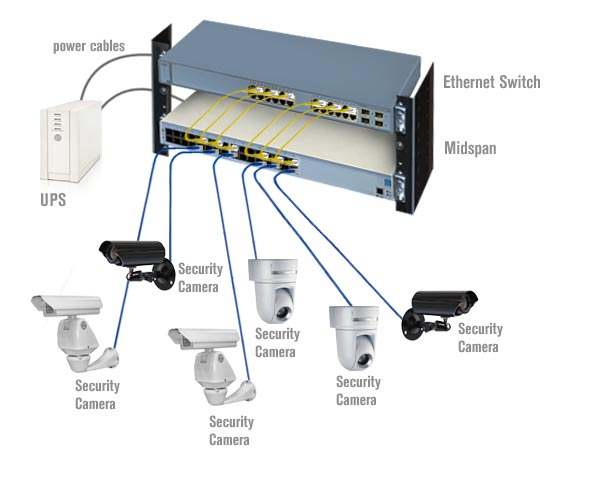PoE Solution
2019/7/25 2:10:47
Why PoE(power over Ethernet)
Power-over-Ethernet (PoE) technology integrates power and data over an Ethernet cable, providing more flexibility in today’s workplace environment. By integrating power into a standard LAN infrastructure, PoE technology enables power to be supplied to network devices, such as IP phones, network cameras and wireless access points. As a result, when combined with a UPS, businesses are fully optimized for continuous operation, virtually eliminating power interruptions and business downtime. With the ability to install virtually anywhere, PoE technology allows for a scalable and flexible networking infrastructure for growth needs.
PoE benefits and advantages
Just as standard telephones have supplied power and voice over the same wiring, PoE technology delivers the same efficiency and benefits for Ethernet network devices.
-
Plug-and-play technology that converges power and data in a single cable between the switch and the powered device (PD), eliminating the need for expensive electrical wiring
-
Increased system flexibility with a solid platform for any networking hardware investment, and supports future PoE enabled application requirements
-
Up to 90% cost reduction by eliminating separate power outlets and connections needed for PDs
-
Simplified installation resulting in lower installation costs and shorter installation time
-
Place PDs where they are needed; not near existing power sources
-
Installation and operation safety – does not involve working around dangerous voltages
-
Operates during a power failure when using a UPS for backup of the PoE switch or midspan powering the PDs
-
Increased maintenance efficiency by being able to shut down or reset PDs remotely
Using PoE
Evaluating a network’s needs and choosing the right PoE solution depends on the power requirements of the PDs and the probability of future expansion. Endspans (PoE enabled switches) or midspans (midspan PoE Hubs) are the two choices of power sourcing equipment (PSE) available today. A PSE sends a maximum of 15.4 watts per port (link) over the LAN cabling system to the PD. The power delivered over the LAN infrastructure is automatically activated when a compatible PD is identified, and blocked to legacy devices that are not PoE compatible. This explains how users are able to safely mix legacy and PoE-compatible devices on a network. PDs without built-in PoE can still be integrated in a PoE system using an active splitter.
The IEEE 802.3af standard provides for power up to 15.4W on the switch or midspan side, which translates to a maximum power consumption of 12.9W on the PD side. PDs requiring higher power than 12.9W make endspans a less effective power solution especially for expanding networks . Even though most manufacturers today offer network switches with built-in PoE support, an existing PoE network structure would most likely benefit by adding a midspan to the switch to provide additional power to the network cable.
Power and data in one cable (CAT5/CAT6)
PoE works across standard CAT5/CAT6 network cabling to supply power directly from the data ports to networked devices. An Ethernet cable has four twisted pairs, but only two of these are used for data transfer. PoE technology is regulated by IEEE 802.3af standard (with new standards coming), which allows two options for providing power over these cables:
-
Utilize the unused spare pairs to transfer the power
-
Utilize the data pairs
The networked devices must be able to accept power from both options. The IEEE 802.3af standard does not allow both sets of wires to be used, so one has to be aware of which method the power sourcing equipment (PSE) vendor is using. Depending on the PoE implementation, the PSE will apply power to either the spare or data wires.
Typical application in Surveillance:



